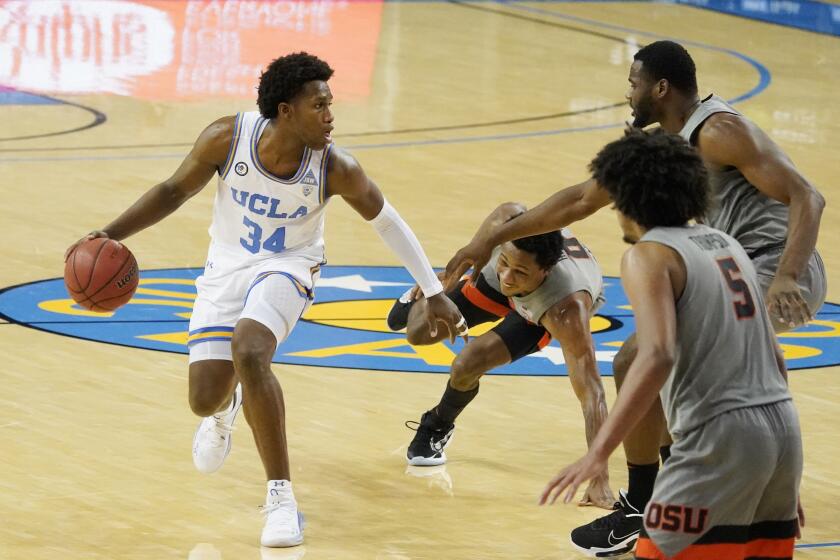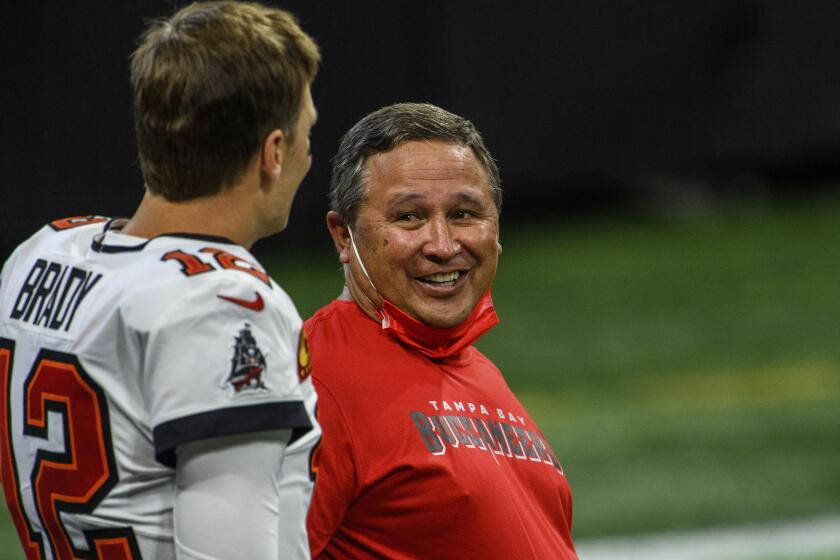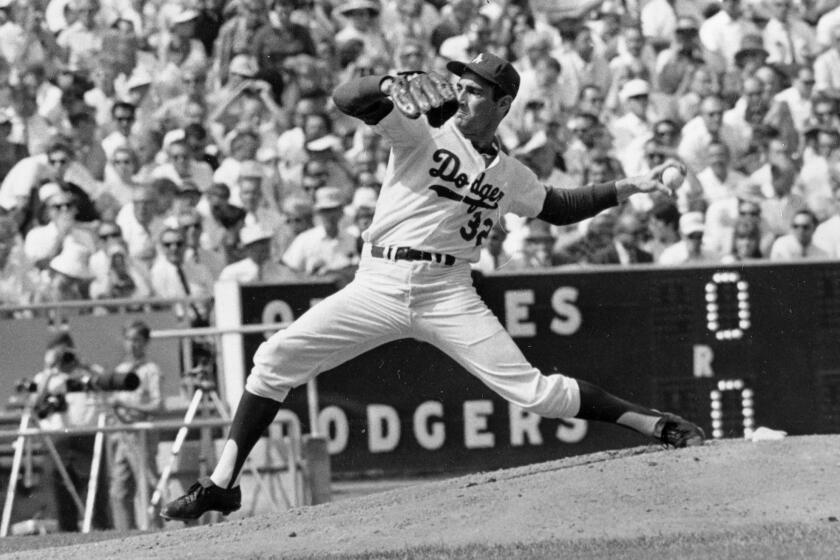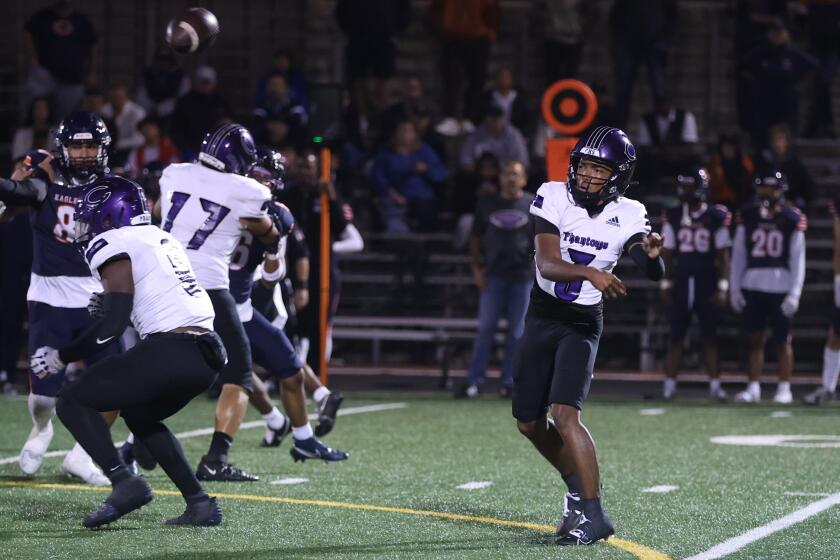Rules incident with Farmers Insurance Open co-leader Patrick Reed overshadows third round
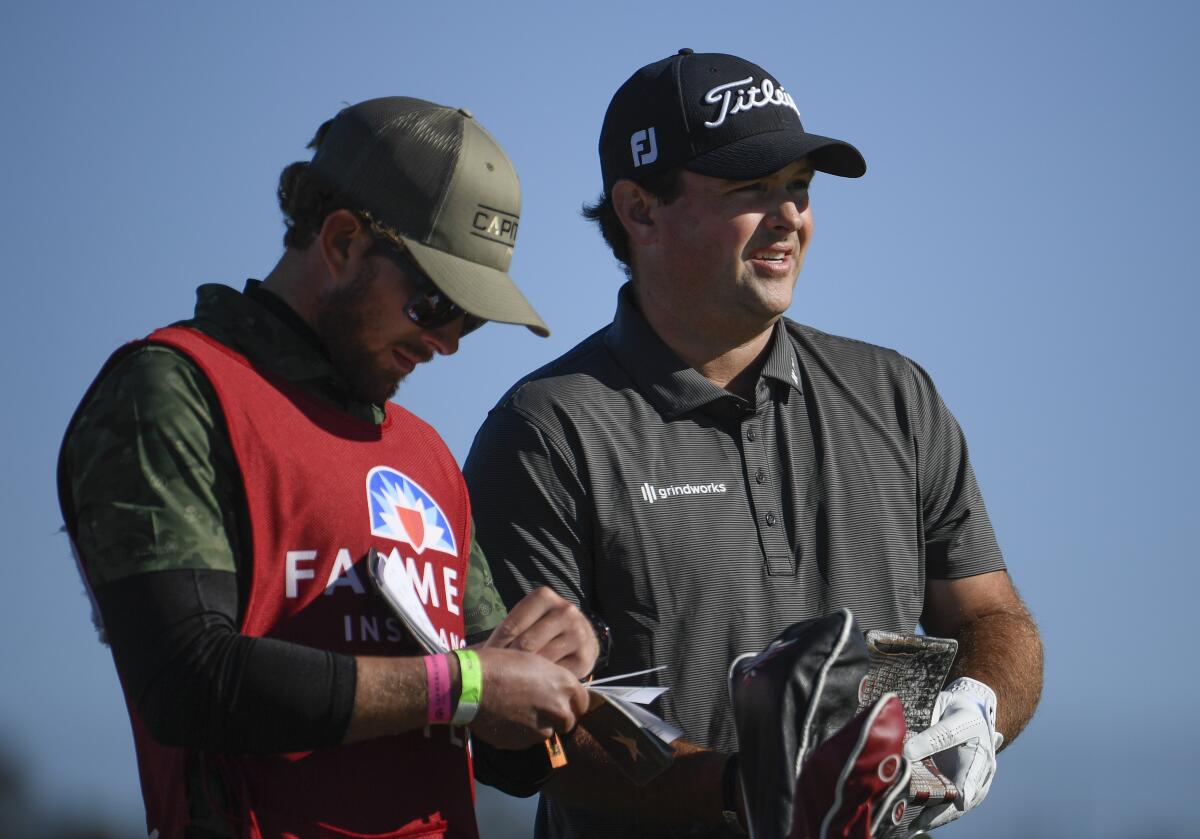
Controversy finds Patrick Reed once again after his shot from the rough on the 10th hole Saturday is ruled an ‘embedded’ ball and he’s given relief.
- Share via
The talk after Saturday’s third round of the Farmers Insurance Open wasn’t about co-leader Carlos Ortiz’s impressive six-under-par 66 on the South Course at Torrey Pines in La Jolla.
It wasn’t about five players — including 2017 Farmers champion Jon Rahm, former world No. 1 Adam Scott and second-round leader Viktor Hovland — being tied for third, two strokes off the lead.
It wasn’t about four-time major winner Rory McIlroy being among four other players who are three strokes back heading into Sunday’s final round at Torrey Pines.
It wasn’t even about the weather being beautiful a day after being wet and wild.
It was about co-leader Patrick Reed, at 10 under with Ortiz, being in the center of a rules controversy.
Again.
Strong performances from David Singleton and Cody Riley help UCLA beat Oregon State 57-52 on Saturday and rebound from a crushing loss to Stanford.
Reed was allowed relief for an “embedded” ball in the rough after an errant second shot from the sand on the 460-yard, par-four 10th hole.
“Did he get away with one here at Torrey Pines?” one TV broadcaster would ask.
The incident, and Reed’s explanation, was accepted by some, received with an arched eyebrow by others and, of course, with outrage and ridicule on social media.
“The optics aren’t great,” CBS Sports broadcaster Jim Nantz said.
At issue was whether Reed’s ball really was embedded. Only the golfer knows for sure because he picked up his ball before a rules official arrived. That’s acceptable, albeit maybe not altogether understandable by the casual observer.
Reed’s description of the situation was accepted by a rules official.
Central to Reed’s belief was that his ball did not bounce in the rough — though TV viewers could easily see that it did — before coming to rest, which makes it more plausible that it could have plugged.
“No one saw the ball bounce,” Reed said. “The guys in my group didn’t see the ball bounce, and the volunteer who was almost on top of the golf ball when it landed literally went and marked it right then and there. ... The rules official comes over and he checks to make sure it’s broken the plane [of the ground], and he agreed.
“At that point, we go and we take a, you know, embedded ball rule relief, which is one club length from the embedded ball and dropped the ball from there.”
CBS analyst Nick Faldo was among those who questioned whether a ball that bounced could have been embedded.
“The physics of a golf ball hitting the ground and then landing at 10 mph instead of 60 mph has got to be very different,” Faldo said on the telecast. “So that’s where I sit on that one.
“... Could a golf ball bounce in the rough and then go forward and really embed itself? Because we see a ball bounce in the rough 100 times this week. Does that mean every golfer could then say, ‘Well, my ball bounced here and it bounced forward. Looks a bit deep to me. Is that embedded?’
“They’d be calling the rules guys over left, right and center.”
Said Reed: “It’s an unfortunate situation, obviously, but at the end of the day when you finish a round and the head rules official comes up to you and has the video and shows everything that went down to the whole group and says that you’ve done this perfectly, you did this the exact right way, the protocols you did were spot on, at that point, you know, I feel great about it.”
The 30-year-old Texan went on to save par, maintaining a four-stoke lead at the time.
Reed’s round unraveled after that with four bogeys in his next six holes, though a birdie at 18 gave him a two-under 70 and pulled him into a share of the third-round lead with Ortiz.
Controversy has swirled around Reed for years, dating to his college days at Georgia and Augusta State when cheating and theft allegations were made against him.
Clyde Christensen won a Super Bowl ring as a coach for Peyton Manning’s Indianapolis Colts and is looking for another one with Manning’s former rival, Tom Brady.
More controversy followed him to the PGA Tour. A year after winning the 2018 Masters, Reed was playing the Hero World Challenge, where he stirred up trouble for himself with an incident in a sand trap in which he twice used his club to move sand from behind his ball.
Reed claimed at the time that from his angle he did not see any sand move while practicing his swing, although it was readily apparent on camera.
He received a two-stroke penalty for improving his lie.
Strong criticism from players, commentators and golf fans followed.
Asked whether he fees like he gets more scrutiny in these situations than other players, Reed said, “Oh, definitely.”
But Reed said he wouldn’t have done anything differently, and he looked forward to the final round.
“You know, the great thing is I still have a chance to win a golf tournament. Now have to go out tomorrow and put the foot down and try to make as many birdies as possible,” he said.
Ortiz, who began the day five shots off the lead, carded seven birdies. His only hiccup was a bogey on the par-three 11th hole.
While he knew he was moving up the leaderboard as the round progressed, Ortiz said he did not make too much of it.
“It doesn’t really matter pretty much until the last nine holes,” said Ortiz, a Guadalajara native whose only PGA Tour victory came last year at Houston. “My goal is to be in contention going into the last round, last nine holes, and I think I’m going to have a good chance.”
More to Read
Go beyond the scoreboard
Get the latest on L.A.'s teams in the daily Sports Report newsletter.
You may occasionally receive promotional content from the Los Angeles Times.
